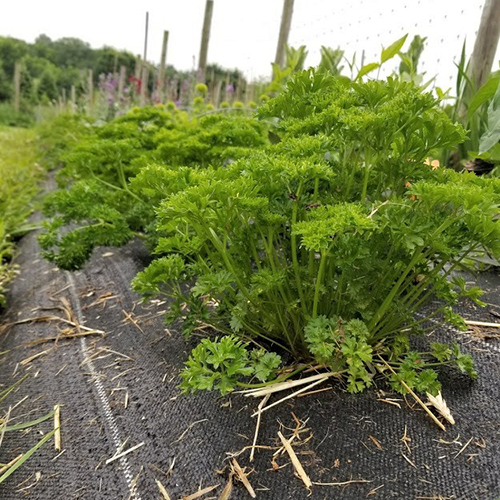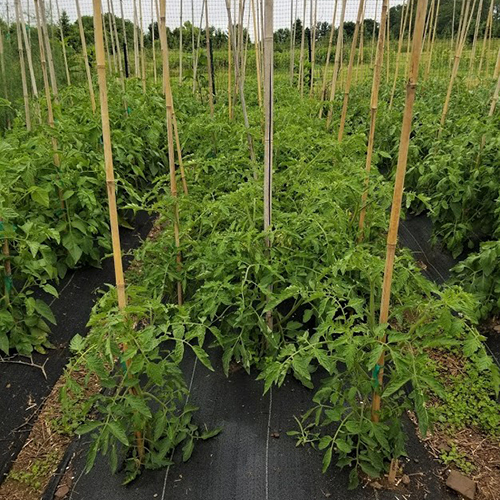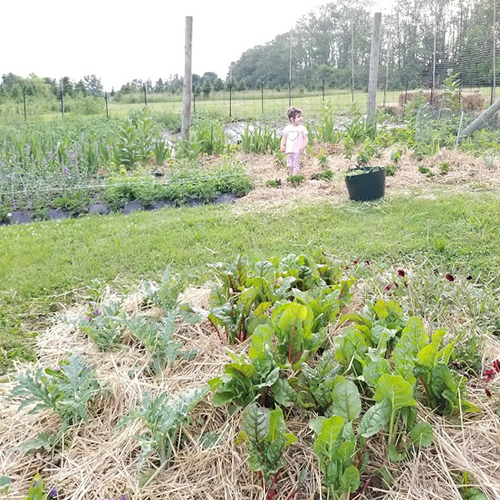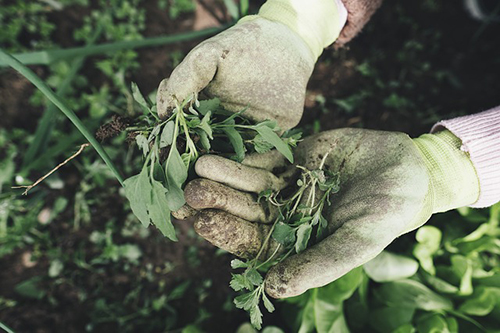Protecting your investment: Weed control!
Tiffany Heater Account Manager | Burpee
Everything is finally planted here in NJ. We had a late start due to a cool spring and a ton of rain every weekend this year. And while I would love to put my feet up and just wait for the tomatoes to ripen, protecting the work we've done this time of year is critical for garden success.

A few types of weed control:
Landscape fabric: We invested in some weed fabric this year to block out a lot of our weeds, and for the most part it has been very successful. You will still get the odd blade of grass coming up in the same hole you planted a tomato in, but let me tell you how much easier it is to pull just one blade of grass!

Grass clippings: In some areas where we have bare soil, we have been bagging some of our grass clippings and putting that down as a mulch. What I found so far with this method is that the clippings breakdown pretty quickly and weeds have been popping up faster than expected. If you choose to go this route, make sure you use grass clippings from a lawn that is untreated. The broadleaf weed control that is in some lawn treatments can have a negative impact on your garden plants.

Straw: I am liking the look of straw in my garden more and more this year. It looks a little messy at first, but with a little rain, and the lawn mowed nearby, it has a really nice finished look to it a couple weeks later. Straw should be put down as deep as possible: 6 to 10 inches. It will settle over time. Just make sure you don't smother young plants!
If you fall behind ...
It's okay, it happens to all of us! If you start to notice weeds getting out of control and you know you won't be able to get to every weed in the garden: Prioritize.
- Get to the worst weeds first. If you've ever pulled a thistle, poison ivy or pokeweed, you know you don't want to pull one ever again - and you know it is much easier to pull when it's a smaller plant. Weed out the weeds that you really don't like pulling first.
- Don't let weeds set seed! The more weed seeds, the more weeds! So if you didn't notice that Pennsylvania Smartweed yesterday, but now it's in full bloom, more weed seed is imminent. Now that's a smart weed! (See what I did there?)
- It's okay to let some weeds grow. I have started to let the clover grow in between the aisles of my tomato rows. Clover "fixes nitrogen," pulling it from the air and making it available to the roots of other plants nearby (hello free fertilizer!). The flowers are also an important food source for honeybees. And finally, the habit of clover is a low-growing flat mat, which acts as a mulch to block out other less desirable weeds. I have also started letting purslane, the occasional dandelion and a few queen anne's lace grow here and there, depending on the location.

How is your garden maintenance coming along this year? Got a weed you love or hate? Let us know!